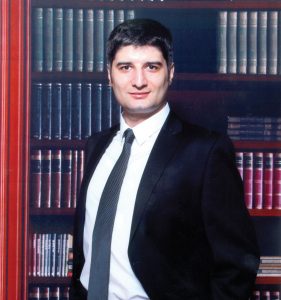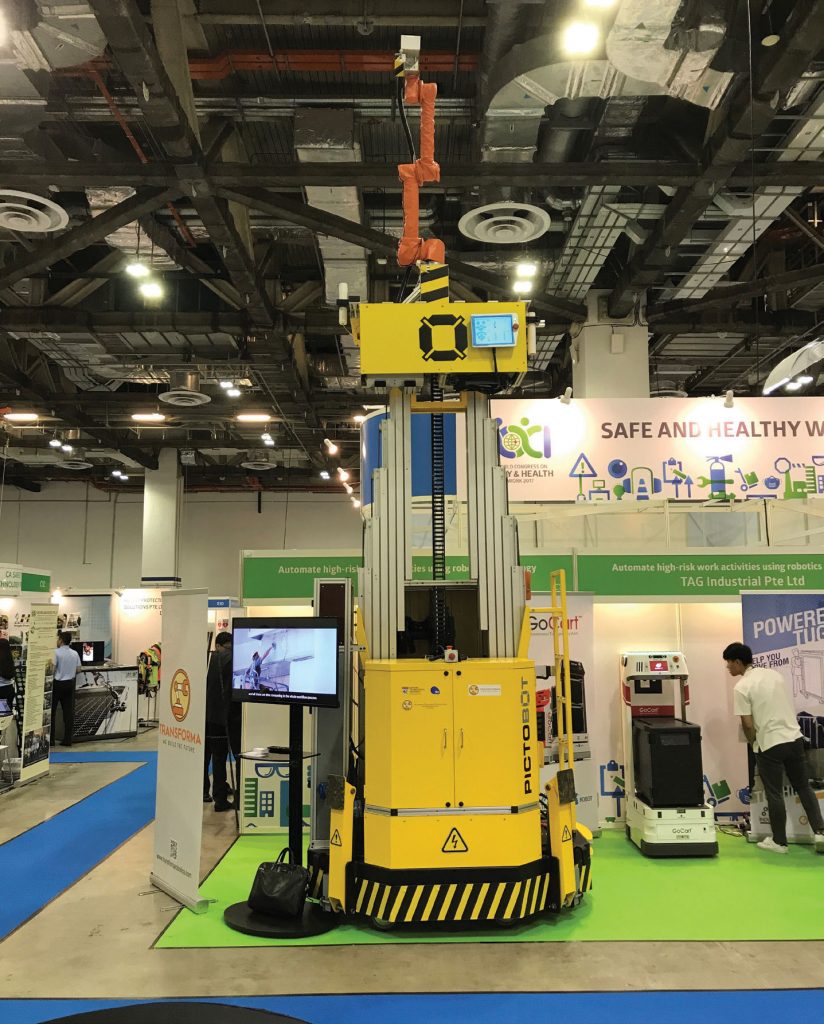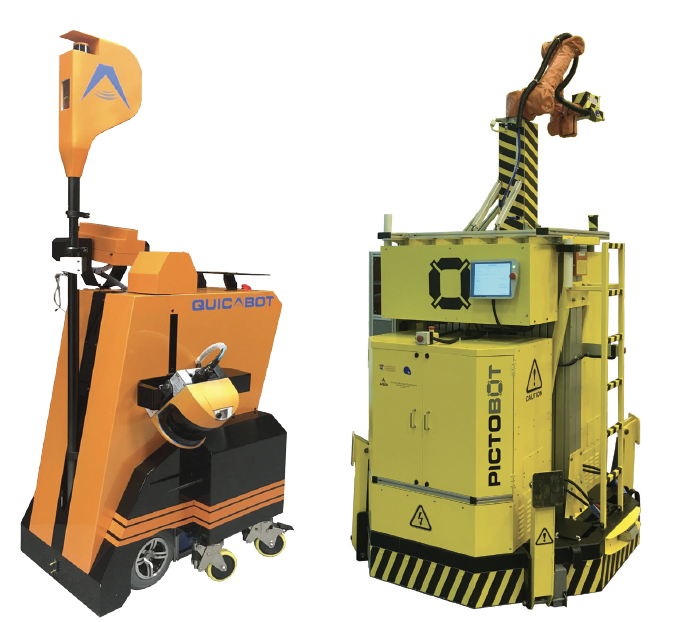Unlike the automobile and manufacturing sector, the emergence of new technologies and automation in the construction sector has been at a slow pace for decades. But significant changes in the sector and processes are anticipated in future as a result of the serious productivity problems faced in the construction environment. Besides, the needs for building, construction and maintenance are growing all around the world, while the construction industry is dealing with the shortage of skilled workers and wage increases. It is evident that inefficient management of resources and use of unskilled workers can result in a considerable decline in construction quality and productivity.
Construction robotics, also known as infrastructure robotics, is a discipline studying robotic systems and methodology for buildings and civil infrastructure construction, inspection and maintenance. According to the classification by the International Federation of Robotics (IFR), such service robots include professional cleaning systems for floors, windows, walls, tank, hulls and pipes; inspection and maintenance systems for facilities, plants, tanks, tubes and pipes; and construction and demolition systems for nuclear plants, building, civil/heavy structures and road constructions. Future developments in robotic technology aim for automating construction tasks and services that affect the sector with the following significance:
• Economics and sustainability: robotic technology would be able to reduce the reliance on unskilled workers and skilled workers operating on sophisticated construction machinery.
• Productivity: robotic technology will streamline and further optimise the current construction process for a shorter project period, and assure quality consistency of the construction project.
• Safety and health: Robotic technology will reduce the human exposure to hazardous and inaccessible environments during construction.
Due to recent advancements in robotic technology and cost down on key robotic components—such as low-cost 3D imaging sensors, high-precision 3D laser scanners, high-density lightweight actuators, open source robotics software, artificial intelligence (AI) and cloud computing, standardised plug-and-play components, and robust wireless communication and control—developing innovative robotic systems to service public infrastructure and private estates has become affordable. However, there are still a number of technical challenges to overcome before these professional service robotic systems can make a massive inroad into real-world services.
To meet the future needs of Singapore, the Building and Construction Authority’s (BCA)Built Environment Research and Innovation Institute (BERII) has worked with experts in the industry and identified the R&D roadmap to develop new processes and technologies that can enable the built environment sector to build and sustain productivity improvements in the long term. These areas include Design for Manufacturing and Assembly (DfMA), Building Information Modelling (BIM), Virtual Design and Construction (VDC), as well as robotics and 3D printing. Jurong Town Corporation (JTC), a Singaporean state-owned real estate company and statutory board under the Ministry of Trade and Industry, has recently launched the largest Open Innovation Call in Singapore, seeking innovative robotics and automation solutions in the four areas of construction productivity and safety, security, facilities management, and industrial goods movement. JTC is among the first agencies to drive the development and adoption of robotics and automation as part of the Partnerships for Capability Transformation through Government Lead Demand initiative (GOV-PACT).
During the past few years, several infrastructure service robot projects for construction services and deep tunnel inspection have been carried out in the Nanyang Technological University (NTU) to strengthen robotics R&D capability and foster the robotics industry and ecosystem that transform Singapore into a Smart Nation. These projects are examples of user-led and user-inspired robotics R&D efforts led by government agencies, universities and the industrial alliance of local and overseas robotics and construction machinery manufacturers, start-up companies and system integrators.
Construction service robotics is one of the areas where robots aim to perform the tasks that are troublesome, dangerous, dirty or highly demanding in a semi or fully autonomous way. In order to achieve such a goal, the robotic spray painter, known as PictoBot—pictor means painter in Latin—and the post-construction quality assessment robot called QuicaBot were invented by scientists from the Robotic Research Centre, NTU, in close collaboration with JTC’s engineers, under the Test-Bedding and Demonstration of Innovation Research funding initiative provided by the National Research Foundation (NRF) Singapore.
Current manual spray painting at industrial developments with high walls requires at least two painters—one operating the spray gun while the other operates the compressor on the ground. The painter uses a scissors lift or scaffold to access high walls and ceilings. There are hazards like fall from height and exposure to harmful chemicals found in paints. Manual roller painting using scissors lift is even less productive, requiring on average four times the duration to paint the same area with similar risks as manual spray painting. Generally, experience is required to achieve good and consistent quality in painting. There is a tendency for more paint to be deposited by a manual spray painter as multiple passes are required. The PictoBot is a stand-alone robot with a higher degree of mobility compared to the paint robots used in manufacturing today and it incorporates diverse modules, each serving a dedicated functionality for automating the entire process of interior paint finishing of large industrial developments. The robot includes a mobile base and a jack-up mechanism that enables paint delivery to high walls and ceilings. Unlike the other paint robots that deploy conventional computer-aided drafting (CAD) model-based solutions, PictoBot is outfitted with a sensor driven control system that enables in-situ scanning of the as-built structure and realtime motion planning to achieve a consistent finishing quality. PictoBot enables the existing workforce to achieve more. A supervisor and PictoBot can paint the wall with a 25 per cent reduction in painting time, while ensuring the consistency in the quality of paint coat that meets industry standards. The risk of falling from height is also eradicated. It also minimises paint dust due to the optimised distribution of paint, thus reducing human exposure to harmful paint chemicals.
Post-construction quality assessment of buildings is a highly demanded and indispensable procedure in Singapore’s construction industry. Currently, such quality assessment is executed by manual inspectors. In a standard daily operation, two to three inspectors are needed to complete the manual assessment procedure. A fully manual inspection is subjected to several errors because of executing the operation in an incorrect way or the use of inaccurate inspection tools. Moreover, the inspection accuracy may decrease over time.
Last but not the least, most of the time, manual inspection has to be done during daytime. QuicaBot, a novel automated post-construction quality assessment robot, is motivated by this time-consuming, tiresome and unexciting procedure of the task. The robot consists of a mobile robot, a thermal camera, a colour camera, a 2D laser scanner and an inclinometer, which is capable of assessing five types of common defects including hollowness, crack, alignment, evenness and inclination. It can navigate a room to deploy its sensors to scan and assess defects in real time. Collected data can be sent and retrieved via cloud to be processed through AI algorithms. The QuicaBot allows the existing workforce to achieve more. An inspector and QuicaBot take 50 per cent less time to inspect 100 per cent architectural finishes of an industrial functional space, compared to two inspectors for the same space via sampling, i.e. a 75 per cent reduction in man-hours. In others words, two inspectors with two QuicaBots can conduct 100 per cent architectural defects checks for twice the space in half the time.
Both PictoBot and QuicaBot are now under commercialisation by NTU spin-off company, Transforma Robotics Pte Ltd.
 PROF CHEN I-MING
PROF CHEN I-MING
Prof Chen I-Ming is an internationally renowned robotics researcher. He received a BS degree from National Taiwan University in 1986, and MS and PhD degrees from California Institute of Technology in 1989 and 1994 respectively. He has been with the School of Mechanical and Aerospace Engineering of Nanyang Technological University (NTU) in Singapore since 1995. He is Director of Robotics Research Centre in NTU from 2013 to 2017. Prof Chen also acted as the Deputy Programme Manager of Agency for Science, Technology and Research (A*STAR) Science and Engineering Research Council (SERC) Industrial Robotics Programme to coordinate project and activities under this multi-institutional programme involving NTU, National University of Singapore (NUS), Singapore Institute of Manufacturing Technology (SIMTech), A*STAR Institute for Infocomm Research (I²R) and Singapore University of Technology and Design (SUTD). He is a member of the Robotics Task Force 2014 under the National Research Foundation, which is responsible for Singapore’s strategic R&D plan in future robotics. His research interests are in logistics and construction robots, wearable devices, human-robot interaction and industrial automation. Prof Chen is also Fellow of Institute of Electrical and Electronics Engineers (IEEE) and Fellow of American Society of Mechanical Engineers (ASME), General Chairman of 2017 IEEE International Conference on Robotics and Automation (ICRA 2017) in Singapore.
 PROF ERDAL KAYACAN
PROF ERDAL KAYACAN
Prof Erdal Kayacan holds a PhD in Electrical and Electronic Engineering from Bogazici University (2011). He was a visiting scholar in University of Oslo in 2009 with the research fellowship of Norway Research Council. After his postdoctoral research in KU Leuven at the Division of Mechatronics, Biostatistics and Sensors (MeBioS), Prof Kayacan went on to pursue his research in NTU at the School of Mechanical and Aerospace Engineering as assistant professor (2014 – current). He has since published more than 80 peer-refereed book chapters, journal and conference papers in intelligent control, fuzzy systems and robotics. He has attracted around SGD4 million as principal investigator in the last three years. His current research projects focus on the design and development of ground and aerial robotic systems, vision-based control techniques and artificial intelligence. Prof Kayacan is co-writer of a course book “Fuzzy Neural Networks for Real Time Control Applications: Concepts, Modeling and Algorithms for Fast Learning”, 1st Edition, Butterworth-Heinemann, Print Book ISBN:9780128026878 (17 September 2015). He is also a Senior Member of IEEE, and an Associate Editor of the IEEE Transactions on Fuzzy Systems.

 Malaysia
Malaysia Hong Kong
Hong Kong Indonesia
Indonesia Tiếng Việt
Tiếng Việt ประเทศไทย
ประเทศไทย










